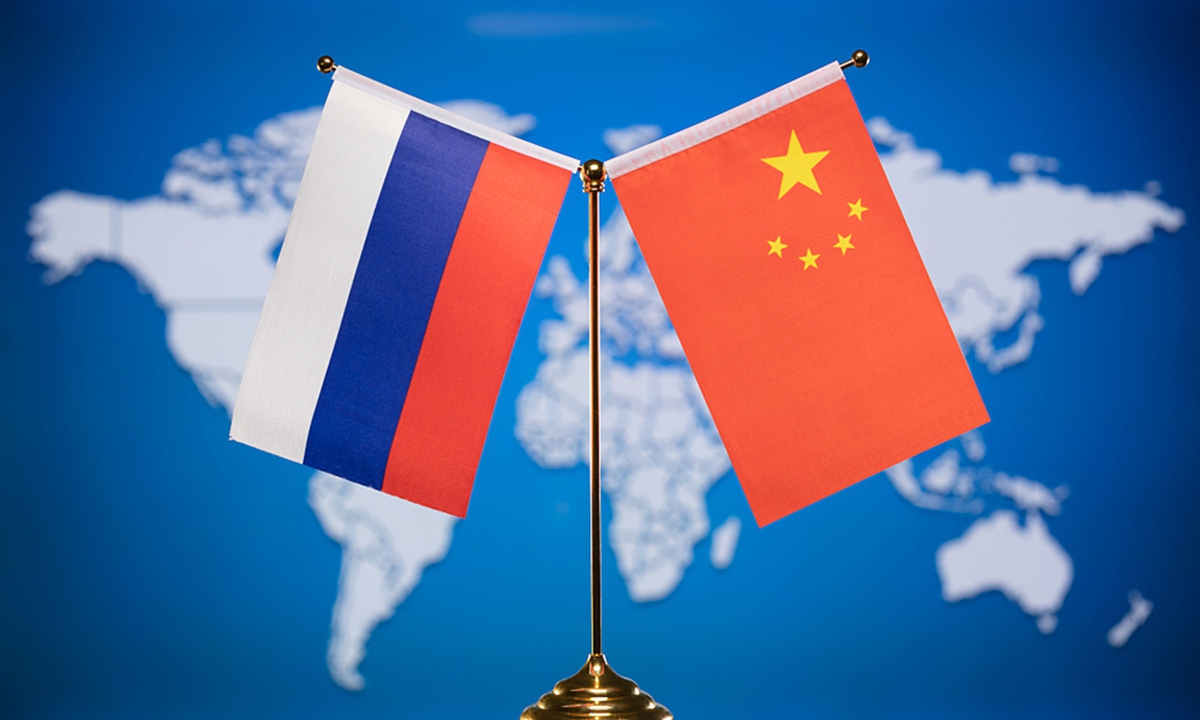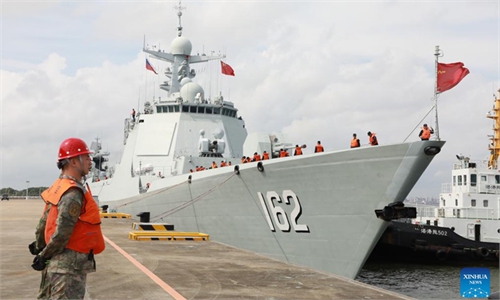Nature of China-Russia naval drills fundamentally differs from that of US-led exercises

China Russia Photo: VCG
The China-Russia Joint Sea-2024 naval exercise kicked off on Sunday at a naval port in Zhanjiang, South China's Guangdong Province. The drill has caught widespread speculations among Western media. They particularly highlighted the timing of the drill, which came just a few days after the recent NATO summit in Washington, hinting that the drill is specially targeted at NATO.The West's alert of China-Russia naval drill reveals its unease and underestimation of the significance of this mechanism on the two countries as well as on the region. China and Russia held their first joint naval drill in 2012. Cui Heng, a research fellow from the Center for Russian Studies of East China Normal University, told the Global Times that as the scale and influence of the drill keep rising, it demonstrates a high-level strategic mutual trust between China and Russia.
Cui's view is echoed by Chinese military expert Zhang Junshe. The Xinhua News Agency cited a military source saying that as a key part of the China-Russia joint exercise, the drill includes subjects such as anchorage defense, joint reconnaissance and early warning, joint search and rescue, and joint air defense and missile defense. Zhang told the Global Times that while these exercises need both sides to release sensitive data such as radar and sonar with each other, it demonstrates the strategic mutual trust between China and Russia; meanwhile, the drill can enhance the joint action capability of Chinese and Russian navies and their ability to cope with maritime security threats.
This year's drill takes place in Zhanjiang, which faces the South China Sea. Usually, China-Russia joint naval exercises take place in the coastal areas of the two countries, determined by the nature of the maritime strategies of the two countries. This means that the objective of the drills is to defend maritime threats, not to show an aggressive gesture at the doorstep of other countries.
This is in stark contrast to the US-led military exercises. The Exercise Rim of the Pacific (RIMPAC) 2024 is still ongoing, with a key part of the drills being the sinking a 40,000-ton target ship aimed at showing off the capability to destroy a Chinese amphibious assault ship or aircraft carrier amid current tensions in the Taiwan Straits and the South China Sea. Additionally, in February of this year, US Marines, sailors and Japanese troops practiced the recapturing of an island during their Iron Fist 24 exercise amid concerns about the mainland's "military moves" around the island of Taiwan. Joint military exercises led by the US typically designate other countries, particularly China and Russia, as hypothetical enemies and are often offensive in nature. As a result, they tend to measure others' corn by their own bushels and use their own perspectives to speculate on China-Russia military exercises.
It is clear that the nature of China-Russia naval drills fundamentally differs from that of US-led exercises. The joint exercise of China and Russia does not target any third party, but US-led drills directly view China as an enemy, displaying a hegemonic and zero-sum mentality. While the purpose of the US-led drills is to break power balance in the region and jeopardize regional stability, China-Russia drills are defensive and aimed at maintaining regional peace and stability.
China and Russia have felt the maritime threats posed by the US and its allies in the South China Sea. Since last year when the Philippines stirred up the waters in the South China Sea, the US, Japan and the Philippines have stepped up military coordination to strengthen their maritime containment of China, leading to heightened tensions in the South China Sea and its surrounding areas. Cui believes China and Russia's choice of Zhanjiang, located on the north end of the South China Sea, as the venue for their drills will have a deterrence effect on the US, Japan and the Philippines and give them a warning of the consequences of posing maritime threats.
The China-Russia Joint Sea-2024 naval exercise is an important display by China and Russia in the current international environment, not only at the military level, but also at the political and strategic level. Through this high-level military cooperation, China and Russia have not only strengthened bilateral relations, but also demonstrated their capabilities and determination to maintain regional peace and stability on a global scale. It is time for the West to abandon its prejudice of China-Russia relations and stop hyping the joint drills.

